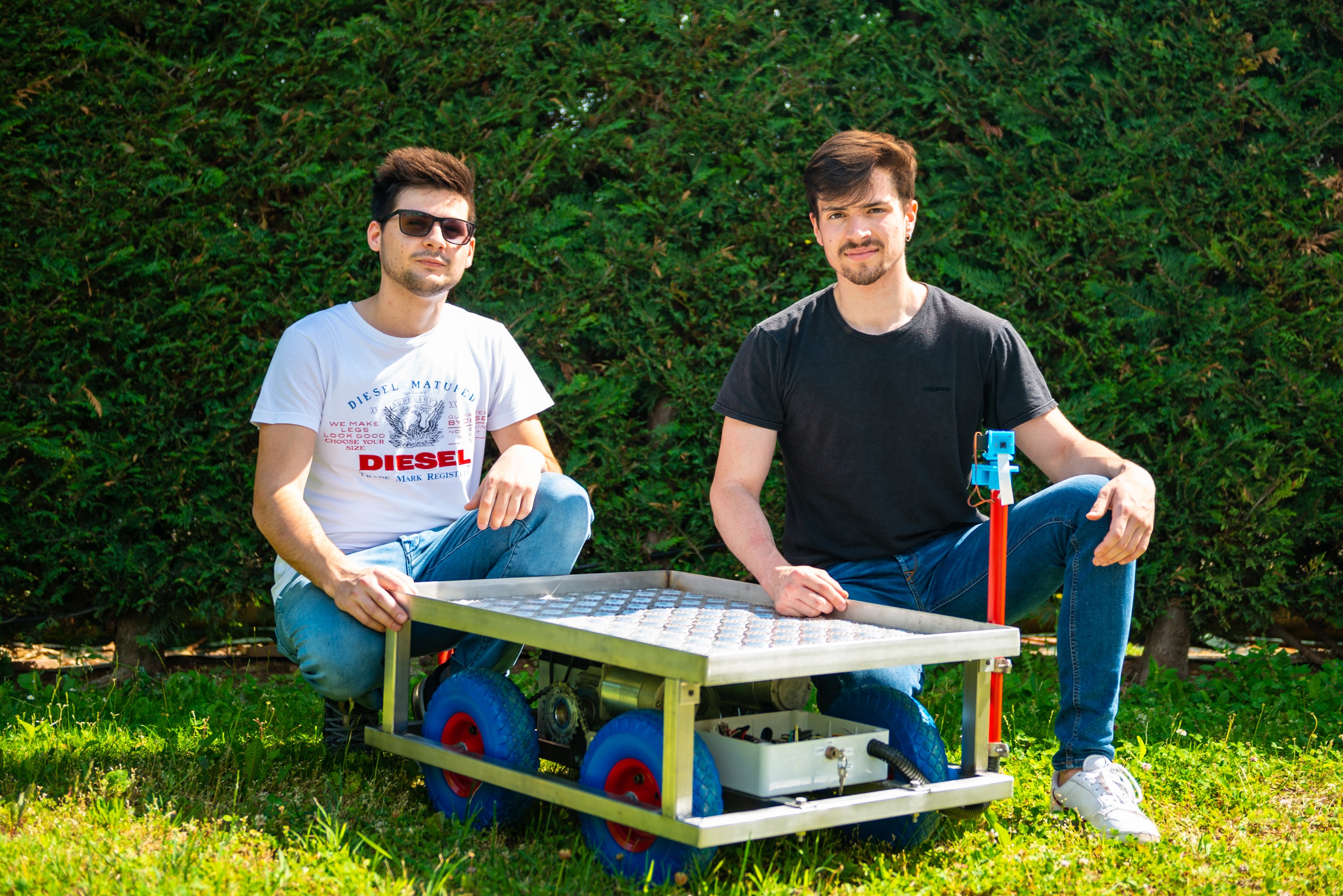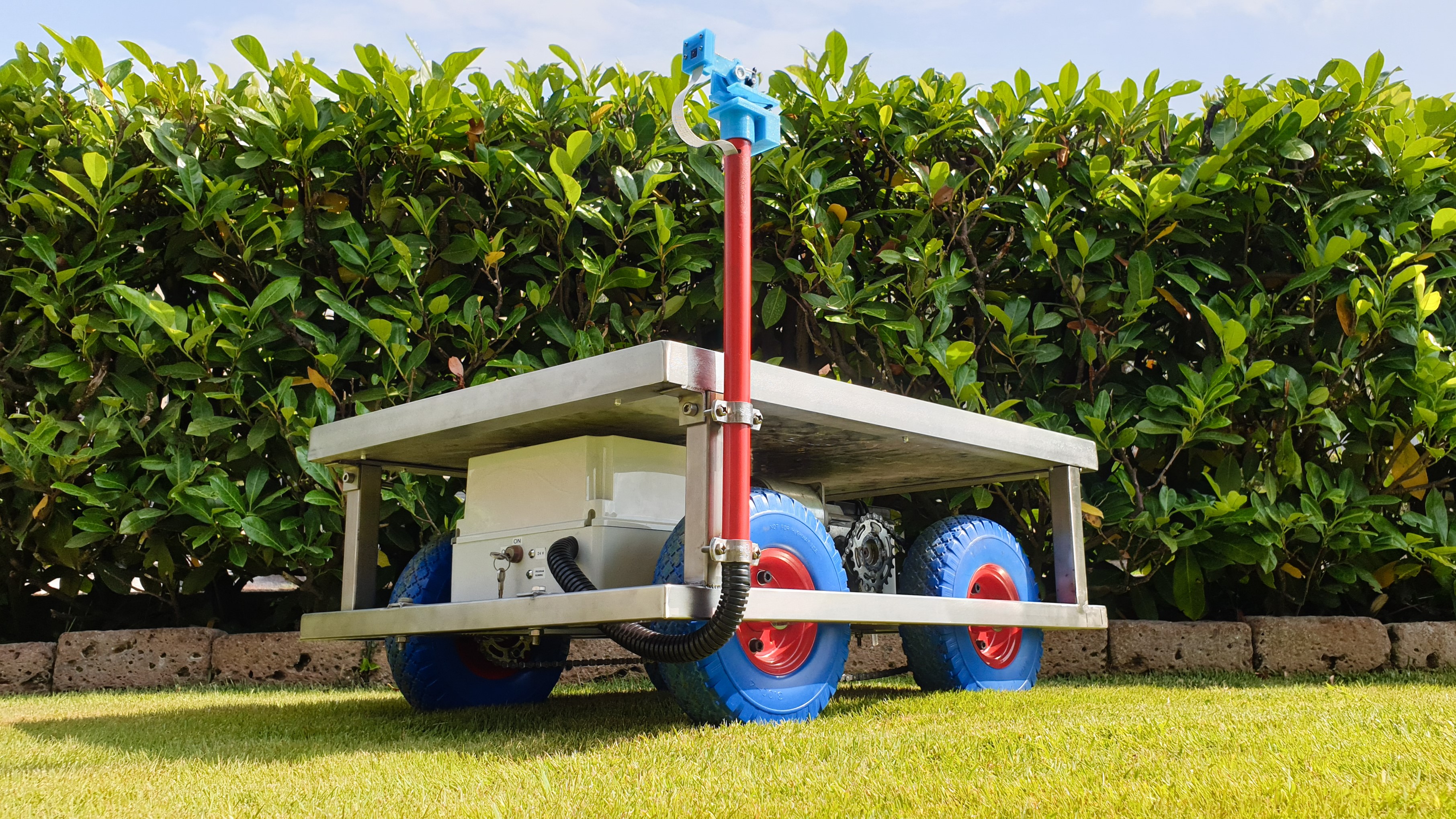COVID-19 Open-Source Innovation: P3psi
The COVID-19 Detect and Protect Challenge is crowdsourcing open-source hardware innovations to tackle the disease. Every one of the 300+ innovations submitted is made freely available, with all instructions needed for others to build them. Here, we talk to Grand Prize Winners Niccolò Avogaro and Edoardo Palladin behind P3psi, a Web-Driven COVID-19 Carrier Robot.
Tell us about your solution. How does it address a specific need around COVID-19 response/recovery?
We built an internet-controlled rover which can safely carry goods during pandemics. It’s a low cost project made from spare parts, is simple to build if you’re a little into electronics and mechanics, and pretty customisable. We wanted to create a robot which could help in flattening the COVID-19 case curve by preventing infected people to get in touch directly with healthy ones. So starting from the idea, we quickly created our first prototype: we needed a 4-wheeled droid which could easily be controlled from a distance. With - honestly speaking - some difficulties we carried out the task by creating a web app with joysticks to rotate the camera and to drive motors.
We created the chassis and the mechanical part and the job was done! P3psi can help reduce the spread of pandemics because it’s easy to drive and could carry lot of weight, up to 150kg, in a very secure way. The driver just needs to load goods, carry it to ill people and than to sanitize the rover after the task’s done. It’s an immediate way to work in a safe environment.
What was the inspiration behind the project?
We decided to build such a robot because we wanted to create a very complete and open-source guide which can help people with different backgrounds to create their own rover. In fact, lots of DIY enthusiasts, who are passionate about robotics, give up on creating something new because internet guides lack clarity and details. It’s very hard to get things done if you get stuck on problems because of poorly-designed tutorials, which in reality are easily solvable.
We thought that it would be very useful to create an all-round guide to create robots. So the inspiration came from a need: in fact we also had lots of problems to code the rover because every internet guide was incomplete. However we made P3psi as an example of what readers could create: in the guide, we mentioned how things could be done in different ways, with some constructing tips. We made the project as open as we could.

Niccolò Avogaro and Edoardo Palladin, with their Community Choice award winning solution, P3psi
Why do you think open-source is so important in responding to COVID-19?
The idea about making an open-source project is the core of our entry. We think that in unprecendeted situations like the COVID-19 pandemic, every help a single person can give to the international community is vital.
By creating an open source and very documented project like our P3psi, we wanted to give the opportunity to people to play a role in the fight against the coronavirus. We gave them the tools to create rovers which could help people in need.
The problem of open-source projects is that most of the time they’re not solid enough to be highly replicable, but we hope our P3psi is. We’ve been contacted in recent days by a couple of members of Hackster who are already building their own rover: we’re very glad the project is being made around the world and we’re hoping that more and more people will use our material in the future.
What is the impact you hope to achieve with this solution?
We hope that our P3psi will be used by makers across the world to create their own rover to help in pandemics or to resolve other problems they face everyday. For the open-source intrinsic nature of the project, we aren’t thinking about large-scale manufacturing. We’re aware that other companies have rovers probably better than ours, but they are under copyrights and very expensive. Our P3psi can be made by everyone and this is its strength. Moreover the fact that P3psi was chosen by the community as a winner is a sign that this project is made by the community for the community.
What is one solution in the #COVID19DetectProtect challenge that you wish you'd built and why?
We wish we had built a project of a sensor capable of detecting the virus on surfaces. We saw that someone tried to create an UV detector that is capable of doing something similar in the impact detect prize. We thought for a little bit to do a similar device but our knowledge in that field was too limited.
The team is formed by Niccolò Avogaro and Edoardo Palladin, two Italian mechatronic engineering students who are passionate about robotics and IoT. Niccolò is more into programming and computers, while Edoardo is passionate about mechanics. They both love electronics and joined forces to create P3psi.

 Locations
Locations